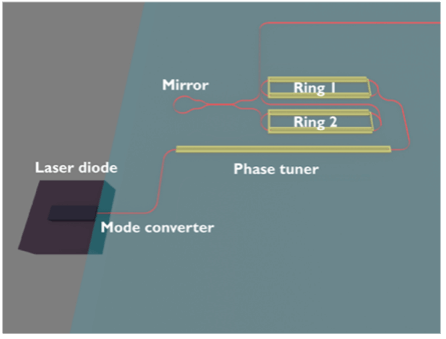As the demand for digital services grows, so does the need for data centres and transmission networks. Unfortunately, these data systems consume vast amounts of energy, resulting in nearly 1% of all energy-related greenhouse gas emissions. This project aims to invent novel quantum devices for highly energy-efficient computing that may help reduce the global digital carbon footprint. Tellurium (Te)-based devices will be gated through antiferroelectric (AFE) stacks to form a multi-valued-logic quantum device. A tapered Te region will be used as the active material of the developed transistors. This proposed architecture can rely on quantum tunnelling effects to minimize energy consumption per transition while circumventing the limitations of the classical field-effect transistors. The AFE layer can transform binary logic switches into ternary logic devices, allowing fewer transistors to perform the same function and reduce overall power consumption. The researchers will first develop, calibrate, and validate an AFE model and use the model to investigate the characteristics of AFE capacitors. The electronic states and materials parameters of Te will also be explored. Next, a new simulation tool will be developed to study the physics related to the proposed devices and the optimal device structure will be proposed for a prototype. The modelling results will be further validated and calibrated against experiments, allowing the device to be updated iteratively for further optimization. The quantum simulation tool and prototype ternary devices will not only help build ultra-low-power electronics for sustainable computing but will also elevate our knowledge in material science, quantum physics, and electronics.

Figure 1. (a) Tellurium crystal structure with unique helical chains for the active channel material of the device. (b) A double hysteresis loop in the polarization vs. electric field characteristic of antiferroelectric thin film for multi-valued-logic operation.
Related Content

Visible wavelength external cavity diode lasers in photonic integrated circuits for atomic technologies
Atoms can be controlled by manipulating their internal states using agile, quiet and reliable laser sources. An external-cavity diode laser (ECDL) is a crucial enabling technology to realize such laser sources since it allows for the narrowing of the linewidth of a laser diode and precise tuning of the laser frequency. This project aims to […]
April 19, 2023
Using Interactive Digital Storytelling to Represent Transformative Quantum Technologies in Augmented/Extended Reality Environments
Summary A major roadblock to the broader adoption of quantum technologies is the long learning curve associated with their seemingly abstract concepts. This often renders quantum technologies inaccessible to most audiences, especially through explanations using conventional scientific language. In this project, we develop novel methods of interactive digital storytelling – augmented and extended reality (AR/XR) […]
February 24, 2021

Next Generation Quantum Sensors
We are developing new semiconductor p-n junctions and designing novel nanowire arrays that have the potential to significantly enhance the ability to detect light at the single photon level over an unprecedented wavelength range from the ultraviolet to infrared.
June 1, 2017


